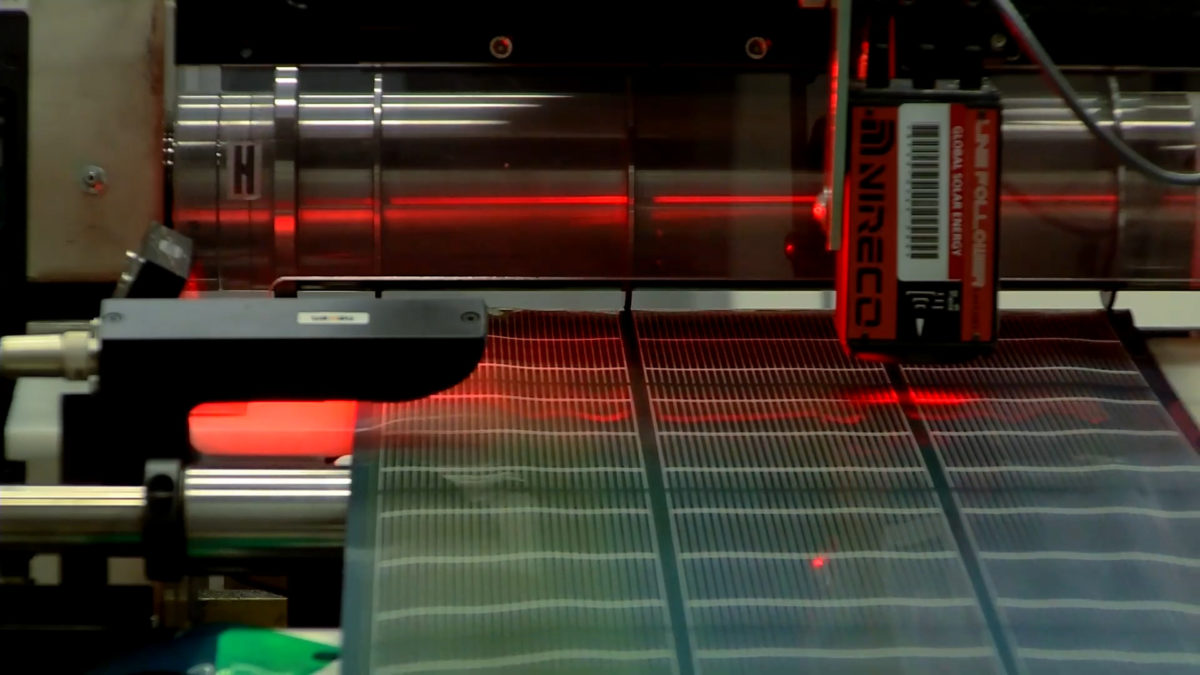While perovskite solar cells are widely acknowledged to have an important role to play in the future of PV, there are still challenges to overcome, and a wealth of different promising approaches making their way through the research community.
Among these are mesoporous carbon perovskite solar cells (m-CPSMs), comprising a titanium-oxide spacer layer, and zirconium/graphite layers deposited on fluorine-doped tin oxide glass. These are a little way behind the highest efficiencies achieved with perovskites, but have shown strong potential for stability thanks to the thick graphite layers that help to prevent both moisture ingress and light-induced degradation.
A 2017 study carried out by École polytechnique fédérale de Lausanne (EPFL) found that m-CPSMs could be stable for more than 10,000 hours under ‘one sun’ illumination. This study also noted an initial increase in the cells’ efficiency under illumination – and another group of researchers led by Japan’s University of Hyogo set out to understand the mechanisms behind this, and how it might affect cells in outdoor, day and night conditions, rather than under constant illumination.
Their work, Light-induced performance increase of carbon-based perovskite solar module for 20-year stability, is published in Cell Reports Physical Science. The group was able to fabricate cells that stood up to 3,000 hours of damp heat testing – at 85 degrees Celsius and 85% humidity – and retained 92% of their initial performance. The cells still retained 90% of their initial performance after 3,260 hours, which the group calculates is equivalent to 20 years installed in outdoor conditions.
Popular content
Light soaking
The cells’ impressive stability was attributed to a reversible light-induced performance increase, involving a reaction between methylammonium – a major component of the perovskite layer, and another organic additive to the materials known as 5-AVAI (5-ammoniumvaleric acid iodide), which was shown to improve charge transport and ion migration in the material.
This increased the efficiency by 1.4% (absolute) within 10 minutes, and led to a relative increase of 16% after 100 hours illumination. The effect is also shown to be reversible, with the cell returning to its initial efficiency when stored in the dark, and increasing again even when placed under low-light conditions.
The group further noted that it used ‘industry compatible’ processes to produce the cells, and expected the light soaking effect to apply similarly to large-scale devices. “This gain should be taken into account for market value and the design architecture of the system used in the devices,” they state. “In addition, the LS techniques presented can allow accurate evaluation and stable operation as well as increased performance, so that these findings will lead to research directed toward practical application of perovskite PVs.”
This content is protected by copyright and may not be reused. If you want to cooperate with us and would like to reuse some of our content, please contact: editors@pv-magazine.com.



very nice but I need a full article related this